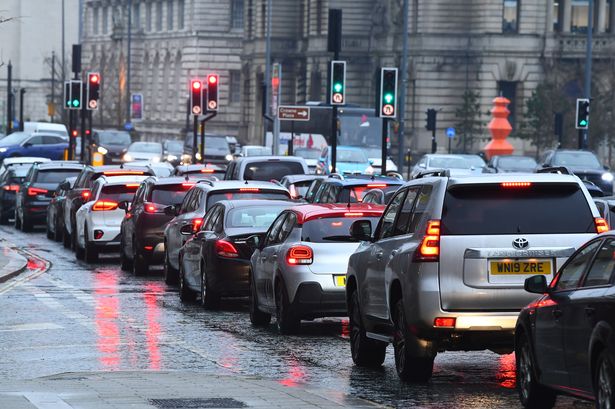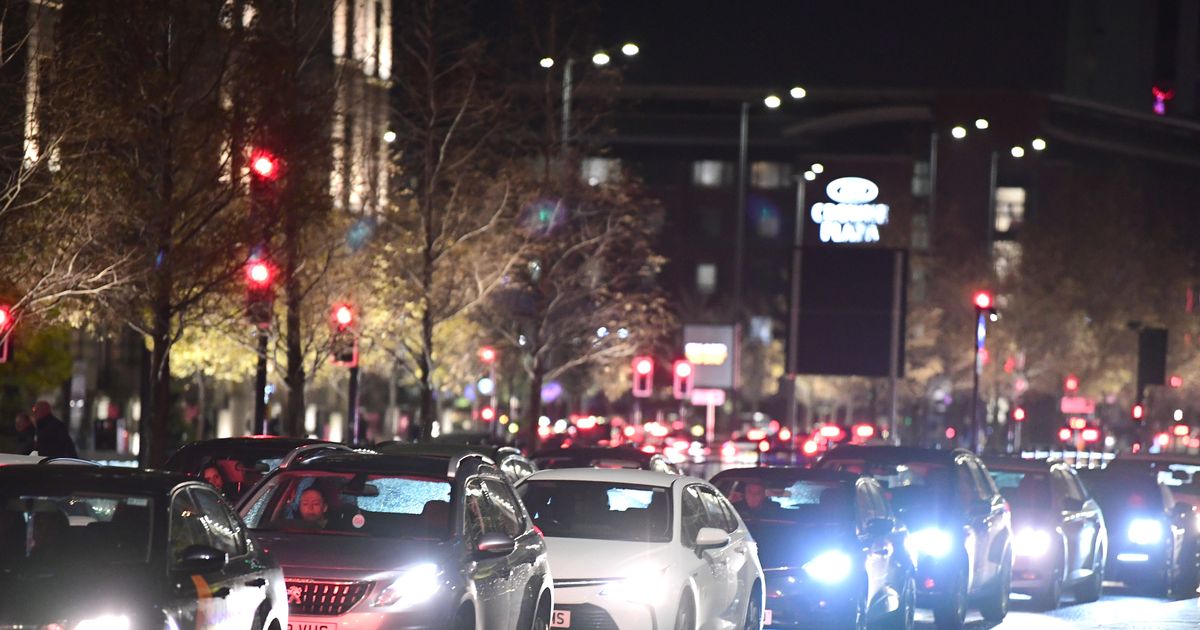Political editor Liam Thorp says there is one major issue with the controversial strategy agreed this week
Liam is the Liverpool ECHO’s multi award-winning political editor and brings you all the major stories coming from the region’s councils, MPs and further afield. He also oversees the work of a team of local democracy reporters, who cover town halls across the Liverpool City Region. Liam led the ECHO’s coverage of the Covid-19 pandemic. He has a particular interest in writing about and highlighting social injustice and has broken a number of nationally recognised exclusive stories. He joined the ECHO in 2017 having previously been chief reporter at The Bolton News. You can find him on twitter @LiamThorpECHO
 Motorists queuing up on the Strand.(Image: Andrew Teebay Liverpool Echo)
Motorists queuing up on the Strand.(Image: Andrew Teebay Liverpool Echo)
As a journalist, you get a feel for the topics and stories that are going to prompt a lot of debate and when it comes to cars, parking and transformational change you can always expect plenty of lively opinions.
So when we spotted Liverpool City Council’s new parking strategy, packed with plans for how to reduce the amount of people driving into and parking in the city centre, we had a feeling there would be a fair amount of strong opinions on the matter – and there were.
For those who haven’t seen it yet, the parking strategy is a major document that has now been agreed by the council’s cabinet, that has the key aim of lowering the volume of drivers heading into the city centre by removing existing parking spaces, creating a new multi-storey facility on the outskirts of the city centre and potentially even bringing in a new tax on employers who allow their staff to park in the heart of the city.
In the report, the council states that parking provision within the city centre is a “key enabler for vehicle movements in the heart of the city, as it draws in private vehicles leading to congestion, poor air quality and increased conflict with pedestrians and cyclists.”
This is hard to argue with. Liverpool and the wider city region suffers with high levels of air pollution. A study released in 2020 revealed that it was causing more than 1,000 deaths per year.
And there are similarly difficult statistics when it comes to the dangers faced by cyclists on the region’s roads. Between 2014 and 2018 Liverpool recorded the highest number of cyclists killed or seriously injured on its roads of any metropolitan boroughs in the country.
In my reporting experience, this is a city – and a city centre – absolutely dogged by poor driving and parking. There aren’t many weeks that go by where my inbox isn’t sent the latest example of a car being driven dangerously or left in an obstructive or illegal position, making life harder for those trying to get past.
All this gives credence to a plan to try and persuade more people to leave their cars at home and stop driving into the city centre so regularly. That makes sense. There is however one big problem.
The problem is that the alternative – public transport – is simply not yet good enough in this city and this region to offer a truly compelling alternative for many people to their trusty cars.
 Motorists queuing up on the Strand.(Image: Liverpool Echo)
Motorists queuing up on the Strand.(Image: Liverpool Echo)
Responding to the parking strategy this week, Lib Dem leader Carl Cashman said: “We know what gets people out of their cars — joined-up thinking around mass transit — and at the moment, that doesn’t exist in Liverpool.”
He pointed to Manchester, where they have “late-night trams that connect to the city centre and multiple large park-and-ride sites to encourage people to park away from the centre.”
If you have been to Manchester recently, it is hard to disagree that it is a city far better equipped to convince people to leave their cars at home and from my admittedly anecdotal experiences – it appears that many more people there are doing just that.
The lack of a tram in our region is an ongoing and crucial blow. I won’t get into the various arguments for whose fault it was that the Mersey Tram project never got off the ground, but it has set this place back years. The ever-expanding Metrolink serves as a painful reminder of that rather dramatic failure.
I am fortunate enough to live very close to a Merseyrail station that I use each day to get to and from work. As anyone in the rail operator’s press office will tell you, I have had my issues with the service in the past, but generally I find it a decent enough service – although the current restricted timetable in the evening is certainly beginning to grate.
The problem is that far too many people in this region are not being served by Merseyrail. Vast parts of Liverpool – largely to its east – for example or many parts of Wirral, have no link to the rail network and so must rely on a fragmented, expensive and unreliable bus system operating on congested roads.
Of course there is important work being done to address some of these issues. Metro Mayor Steve Rotheram is in the process of bringing the buses back into public control, while new stations are being built in Wirral, St Helens and Daresbury.
These are crucial projects that will help to better connect people through public transport in this region, but not for several years. Until the residents of Merseyside experience a much more joined up, attractive and reliable public transport network it will be difficult to talk them into ditching their cars. anytime soon.
